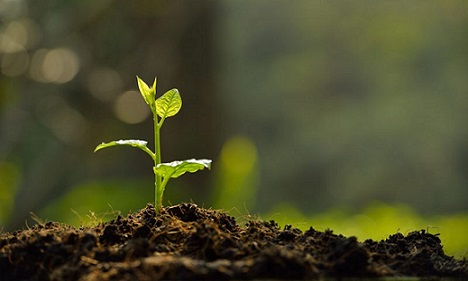 This type of fertilizer can be used for giving a snack or light nutrient boost to your plants every month or so. During the growing season it can be every 2 weeks. Just mix the foliar spray into a backpack sprayer tank, and spray all the plants at once.
This type of fertilizer can be used for giving a snack or light nutrient boost to your plants every month or so. During the growing season it can be every 2 weeks. Just mix the foliar spray into a backpack sprayer tank, and spray all the plants at once.
Liquid fertilizers can be absorbed by plants through their leaf pores and their roots. When roots are stressed or nutrients are unavailable or lacking in the soil, they can be supplied by foliar feeding. It is particularly effective for providing an extra boost to fast-growing plants such as vegetables during the growing season. Liquid seaweed (kelp) and other foliar fertilizers, are rich in growth hormones and micronutrients. They appear to act in the form of a catalyst, increasing a plant’s nutrient uptake. Two common types of organic foliar fertilizers are seaweed extract and compost tea.
How To Apply Liquid Fertilizers
With fruiting and flowering plants, foliar sprays tend to be most useful during periods of extreme temperatures or droughts or other critical periods like during fruit set or after transplanting. Biweekly spraying is recommended by some suppliers for leaf crops.
When liquid fertilizers are used, you should follow label instructions at all times for proper application methods and dilution. A surfactant can be used, like a mild soap or coconut oil, for better leaf coverage. Otherwise, the spray might bead up on the plant’s foliage and maximum benefit will not be achieved. Carefully measure the surfactant; if too much is used, the plants may become damaged. The most effective is to use a spray mixture that is slightly acidic, so make sure you check the pH of the spray. Small amounts of vinegar can be used for lowering pH or baking soda to increase it. Aim for a 6 to 6.5 pH.
Any mister or sprayer will work, from a knapsack to hand-trigger sprayer. Your spray should be set to as fine of a spray as it possible. Don’t ever use a spray that was used previously for applying herbicides.
Early evening and early morning are the best times for spraying. That is when foliage won’t burn and liquids are absorbed most quickly. Spray on a day when temperatures are not too extreme and there is no rain in the forecast.
Spray until liquid is dripping off of the leaves. The spray should be concentrated on the undersides of the leaves, where it is more likely that leap pores will be open. Liquid fertilizers can also be watered in around the root zones. Liquid fertilizers can also be carried to your plants via a drip irrigation system. The better product for this is kelp since the irrigation emitters can be clogged by fish emulsion.